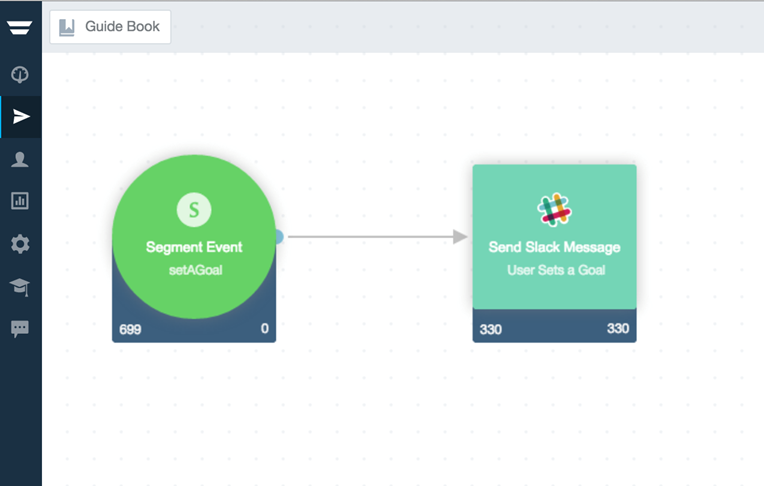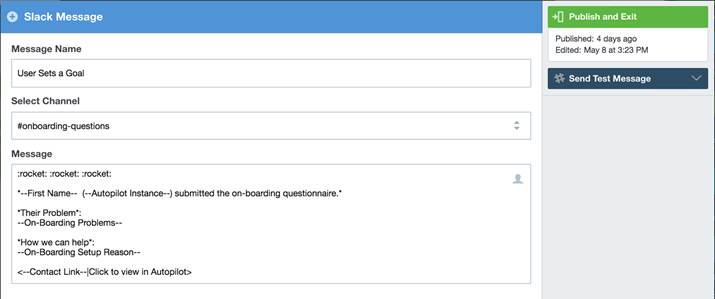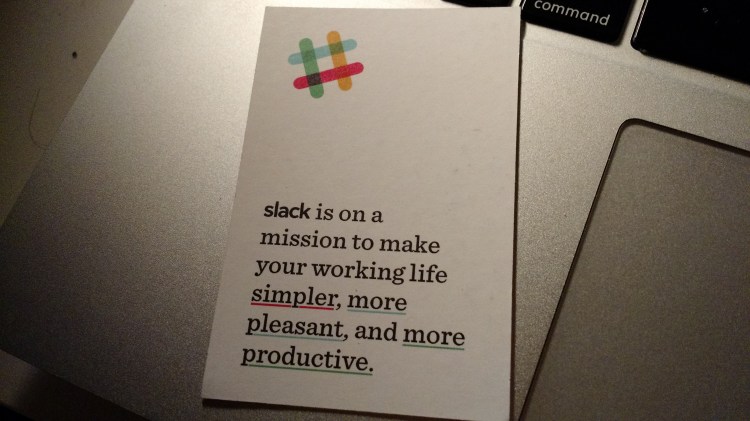If you pay any attention to the business software industry, you probably can’t hear enough about Slack’s status as belle of the proverbial tech ball. But the company has admittedly done a less-than-clear (okay, shitty) job of explaining what it’s for, or how or why it helps you get your job done better or more efficiently. So we tracked down a great example.
I caught up with Mike Sharkey, CEO of Autopilot, a marketing automation platform (MAP), to shed some light on what’s possible with Slack integrated into your workflow from a marketing perspective. It’s pretty cool — you can see how Slack starts sounding less like a billion-dollar chat app and more like a real work tool.
Automating what?
Marketing automation platforms (MAPs) enable marketing departments to automate repetitive tasks — making sense of customer data (CRM, web, mobile, email, etc.) and translating it into something actionable for marketers. This process involves a lot of data and is really challenging to get right, but the goal is to drive leads and sales through better, more contextual, real-time messaging.
Autopilot integrates with marketing operations technology like Salesforce for CRM, Twilio for SMS, Lob for direct mail (yep, that’s still a thing), Segment for customer data routing/integration, Zapier for event-based automation, and GoodData for sophisticated BI. Before MAPs like Autopilot, analysts of different skill sets would access all of these pockets of customer information, each in their own dreaded data “silo.” They’d then work to cobble these pockets together into some useful insight to influence marketing. Autopilot serves as the orchestration between your customer data and all of these potential integration points from the very get-go.
Marketing automation: How to make the right buying decision (the first time)
is now available on VB Insight for $299, or free with your marketing tech subscription
Autopilot is a unique player to watch, if not for its broad integration than for its aggressive pricing. It comes in at about 1/10th upstream players like Marketo or Salesforce, available through a self-service online trial (announced today at as low as $20/mo for 1,000 contacts).
Where Slack comes in
If Autopilot is the orchestra for customer data, Slack is in the control booth, telling the mixer what levels to adjust on the fly.
Almost everyone in the organization is responsible for customer data in some way — marketing, communications, customer service, product teams, and so on, but it’s hard to get everyone coordinated quickly. Right now, Autopilot talks to those people with email and text. Clunky. Inefficient. Not very scalable.
Here’s how Autopilot + Slack does it better….
Autopilot can send messages to internal Slack ‘channels,’ like to sales or support, or even to specific users to let them know what’s happening and how to react. Since Slack is open and shareable, this provides a transparent forum for teams to collaborate and be more responsive to customer needs.
What it looks like
Let’s say a new user signs up for your product and fills out a form and a questionnaire. This sends an event (“setAGoal”) to Segment, the data routing platform, which in turn triggers an Autopilot customer journey.

Autopilot sends an internal message to the team’s Slack channel, so that the team can now view and react to any issues as they happen.

The Slack chat notification is configured in Autopilot using dynamic variables that can be adjusted for any situation in your workflow.

Breaking out of the silo
So instead of waiting on a customer service rep to report an issue, have it routed to the right team, and hopefully respond accordingly, in Slack, it all sort of just happens. The right people are alerted to events or issues in real-time, with context, and it all lives out in a relatively open platform. Accountability is baked in.
The Autopilot/Slack integration is infinitely customizable — some other examples include:
- Sales: Autopilot (or any MAP) provides the ability to call out specific people (e.g. a territory sales rep) by adding the “@ salespeople” name in a chat after a lead is created in their territory.
- Marketers can keep tabs on marketing performance or important milestones, such as new signups, cancellations, downloads, website visits, email clicks, etc., link it to their analytics dashboards automatically, and share the information through Slack channels.
- Product Managers can focus on user adoption and product engagement by tracking important in-app events as they happen in aggregate.
- Managers can create searchable repositories for collaboration around customer needs that are permanently stored and available for best practice sharing.
- Executives can chime in to team members or events to push specific initiatives, naturally throttling urgency on assignments.
Marketing automation is a rising force in the modern marketing department, but it’s a confusing space with a lot of vendors. We’ve recently released the most data-backed buyer’s guide for MAPs in the market. We’re seeing only about 5 percent penetration in most industries, but those same companies are reporting an 80 percent increase in leads and a 77 percent increase in conversions when using a MAP.
It’s powerful stuff.
VentureBeat's mission is to be a digital town square for technical decision-makers to gain knowledge about transformative enterprise technology and transact. Learn More

